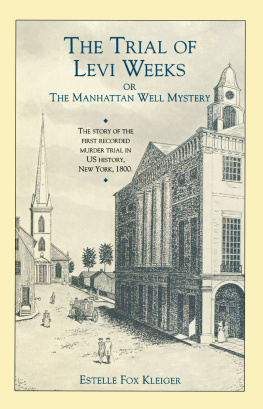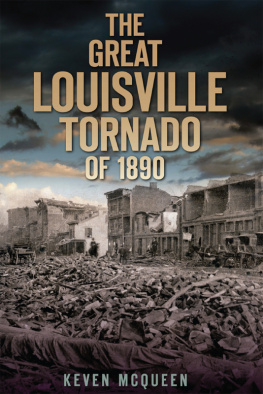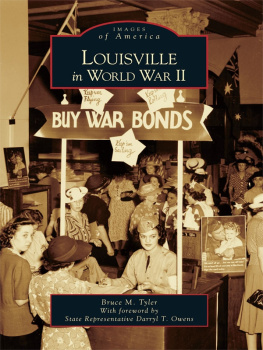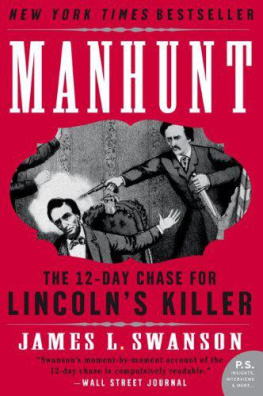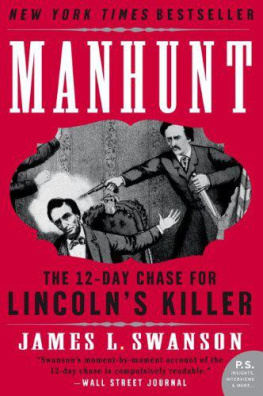Published by The History Press
Charleston, SC
www.historypress.net
Copyright 2018 by Shawn M. Herron
All rights reserved
Front cover, top left: Courier-Journal; top right: Courier-Journal; bottom left: Courier-Journal;
bottom right: Reno Gazette Journal.
First published 2018
e-book edition 2018
ISBN 978.1.43966.399.8
Library of Congress Control Number: 2017958381
print edition ISBN 978.1.46713.816.1
Notice: The information in this book is true and complete to the best of our knowledge. It is offered without guarantee on the part of the author or The History Press. The author and The History Press disclaim all liability in connection with the use of this book.
All rights reserved. No part of this book may be reproduced or transmitted in any form whatsoever without prior written permission from the publisher except in the case of brief quotations embodied in critical articles and reviews.
To my parents, Eugene and Regenia Herron, who always believed I could do anything I wanted.
CONTENTS
PREFACE
Language use at the time of the events depicted in this book differed to some extent than it does today. For example, the words street, avenue and pike used in an address were printed in lowercase, and that convention will be followed here.
Certain words were not spelled as they are today; except in quotes, the modern spelling will be used. The use of the word clew (clue) is one example.
The names of many of the individuals involved in this crime have varied spellings in the news accounts. To the extent possible, I have standardized these to the spelling most commonly used, but I have not changed the spelling in direct quotes.
ACKNOWLEDGEMENTS
When I first came across this story, I became intrigued, as I have worked many missing persons cases over the years. A long-missing child is the ultimate horror for a family, of course. As I learned more about this story, I realized how complex it was and how much could be learnedeven todayand applied to similar cases.
During the research and writing process, I have had more support than I can fully describe. Much appreciation is extended to the library resources and staff of the Louisville Free Public Library and the University of Louisville, Brandeis School of Law, Law Library, who pointed me in the right direction. Online resources used include, but are certainly not limited to, Newspapers.com and Ancestry.com, which I used to chase down details of family relationships. Although of course the Courier-Journal and the Louisville Times were the primary sources of information on the case, other newspapers in cities across the nation also contributed to the telling of the story. Unless otherwise noted, all images are courtesy of the Courier-Journal.
The most tremendous and unique source of information, however, was the transcript of the original trial, located purely by happenstance at the University of Notre Dame Library.
Family, friends and coworkers kept me bolstered throughout: my mom and my dad, in spiritof course; my cousins Peggy and Debbie; friends Gail, Robert and Brenda; and so many others I cant begin to name. The encouragement I received gave me the incentive to finish this story.
Introduction
A LONELY GRAVE
In December 1909, Louisville citizens were mystified by the sudden disappearance of eight-year-old Alma Kellner, stolen away, apparently, during her devotions after Mass. Residents were then horrified by the discovery of her body, almost six months later, just one hundred yards from where she was last seen. The ghastly murder of this young girl galvanized the nationand the worldas a manhunt took a determined Louisville police detective thousands of miles across the country in search of his murderous quarry.
The discovery of young Almas body coincided with the dedication of Kentuckys new capitol building, and the governor would take time from the festivities to perform his own grim duties related to the investigation. At the same time that Joseph Wendling was being chased across the country, Dr. Hawley Harvey Crippen, suspected of murdering his wife in England, and his lover were being chased across the ocean. Both men were apprehended within days of each other. The two manhunts dueled for headlines on the front pages of newspapers across the nation and the world. It was a race to learn who would be captured first. Wendling, the accused killer of Alma Kellner, was apprehended in San Francisco only a day before Dr. Hawley Crippen was found in Canada. For a few days in 1910, Louisville residents waited anxiously for the resolution of the trial.
A next generation of Louisville residents, who likely knew of the murder only from their parents, followed the end of the story, with Joseph Wendling boarding a ship to leave the United States and return to France, the place of his birth.
Even today, many of the landmarks in this case that gripped the nation and the world for weeks still stand, their significance forgotten. The graves of those involved are scattered throughout Louisville and extend even to other states, many almost certainly never visited by anyone who knows who the interred are. Alma Kellners grave may perhaps draw the attention of a passerby who wonders why a child died so young. Doubtless, family members of many of the parties still live in Louisville, and they perhaps have no knowledge at all of the roles their family members played in the case. Maybe this story will cause more than one person to pause while passing by the places that formed the backdrop for the events and consider, for just a moment, the layers of history reflected there.
THE CRIME
All that can be said, with any degree of certainty, is that on the morning of Wednesday, December 8, 1909, Alma Katherine Kellner, age eight, left her home at 507 East Broadway in Louisville, Kentucky, to attend Mass at St. Johns Catholic Church. The church, located at the intersection of Clay street and East Walnut street, now Muhammad Ali Boulevard, was some six blocks from the Kellner residence. Young Alma had walked that route many times before. The church was so close, in fact, that its spires would have been visible from the Kellner home. Alma had attended Mass there just the previous Sunday with a playmate, although the Kellner family, Frederick F. (Fred), Florence and their three children usually attended Mass at St. Bonifaces Catholic Church, a few blocks farther north from their home. The neighborhood, then home to generations of descendants of German immigrants, many of the Roman Catholic faith, boasted several churches of various denominations in the immediate area.
According to her maternal aunt, Elizabeth Weitzel, who lived with the Kellners and helped Alma dress that morning, young Alma left for Mass wearing a plaid dress, a cream tan brown with a little green and an old rose stripe in it. The dress was trimmed with green velvet and had a green velvet collar, pearl buttons and a white guimpe (a high-necked blouse worn under a dress with a lower neckline). It was a bitterly cold morning, so the child was also wearing a black-and-white-checked coat with a velvet collar and an emblem on the arms. Her hat was a mushroom shape, a popular style at the time, and was dark red. Her stockings were black-ribbed knit, and under her dress she wore a white-ribbed undershirt and black lingerie. Her gloves were tan, kid, leather gauntlets with a red star. Her buttoned, black shoes were ones she had worn for some time, her aunt having made the decision that Alma should wear her old shoes rather than a new pair she had recently received. She carried a brand-new handkerchief in her coat pocket, made of a crossbar fabric with a small bowknot emblem in the corner. She left the house at approximately 9:45 a.m. for the High Mass celebrating the Feast of the Immaculate Conception of the Virgin Mary, electing to attend the church closer to her home rather than the familys usual parish. (Her mother and aunt had already attended Mass earlier that morning.) Before Alma left the house, she played with her young brother, Frederick Jr. On departing, she kissed her mother and baby brother goodbye. Her mother and her aunt watched her skip east down Broadway.



